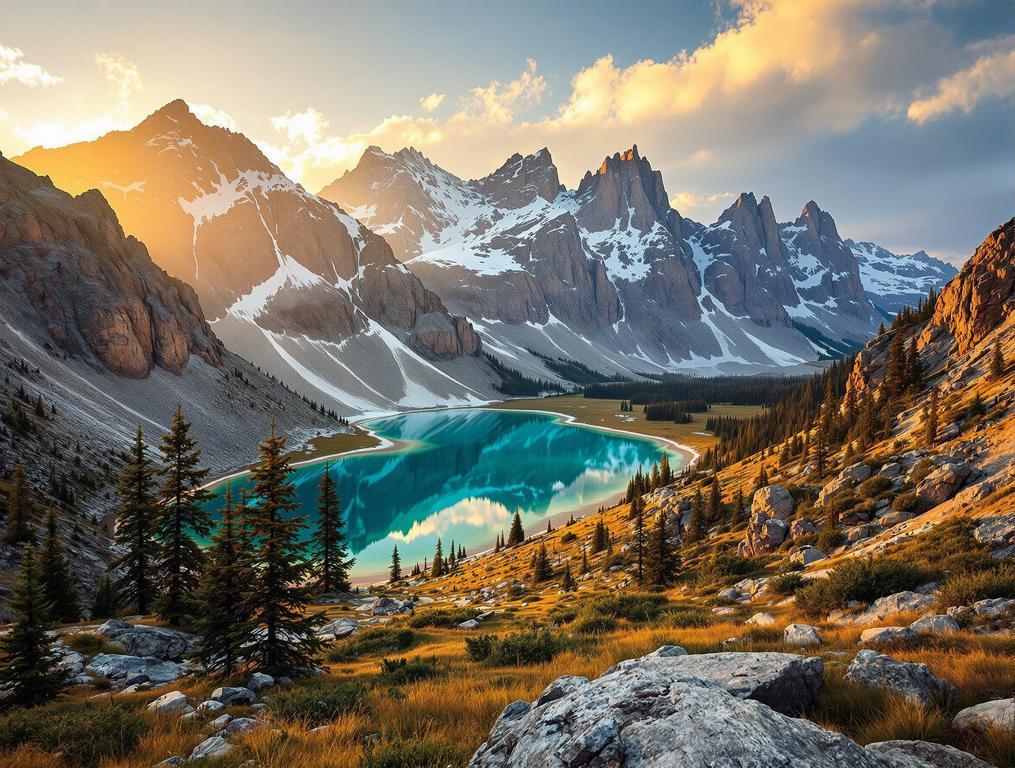I step out of my rental car at the edge of Lamoille Canyon, just 20 miles southeast of Elko, and immediately see why locals call these rugged peaks the “Alps of Nevada.” A hawk circles overhead as I breathe in air that’s noticeably cooler than the Nevada desert I drove through an hour ago. The morning light catches on one of the 20+ alpine lakes scattered throughout these mountains, creating a shimmer that beckons hikers like a hidden treasure.
At 5,066 feet elevation, Elko itself sits unassumingly as a gateway to this wilderness. This modest city of 20,900 residents serves as the largest hub within 130 miles, yet remains virtually unknown to most American travelers heading to crowded Western mountain towns.
Nevada’s hidden alpine treasure with 20+ mountain lakes
“You’ve found the best-kept secret in the West,” whispers a weather-worn rancher at the Western Folklife Center downtown. He points to a topographical map of the Ruby Mountains showing dozens of blue dots representing alpine lakes – most requiring nothing more than a moderate hike to reach.
“People fly to Switzerland or drive to Colorado searching for mountain experiences like this, but here I can hike to an alpine lake and not see another soul all day. The silence up there? That’s the real gold in these mountains.”
The Ruby Crest Trail stretches 43 miles along ridge lines that routinely exceed 10,000 feet, connecting lakes with names like Lamoille, Liberty, and Favre. Unlike the packed parking lots at Aspen or Jackson Hole trailheads, most Ruby Mountain routes offer free parking with spots readily available even on summer weekends.
For Eastern travelers seeking similar wilderness without western travel, the hidden hiking trails of Ohio’s Hocking Hills offer comparable solitude, though without the alpine elevation.
The “Alps of Nevada” that even locals keep secret
Elko sits in the heart of Nevada’s gold country, with the county producing a significant portion of America’s gold output. This mining heritage has kept the economy stable while allowing the surrounding wilderness to remain undeveloped – a stark contrast to resort-dominated mountain towns elsewhere.
Lamoille Canyon’s 12-mile scenic byway winds through glacier-carved valleys where temperatures hover in the comfortable 70s°F during summer months, while desert floors bake in triple-digit heat. The road provides access to Island Lake, an alpine gem reachable via a moderate 2-mile hike.
After exploring the Ruby Mountains, many visitors extend their Western adventure with a visit to Idaho’s natural hot springs, where thermal waters provide perfect relaxation for trail-weary muscles.
Where authentic cowboy culture meets gold mining heritage
Downtown Elko reveals its dual identity through institutions like the Western Folklife Center, home to the annual National Cowboy Poetry Gathering each January, and the Northeastern Nevada Museum, which documents the region’s rich mining history.
The authentic Western heritage preserved in Elko mirrors other American cultural strongholds like Berea, Kentucky, where traditional crafts remain vital to local identity.
For history buffs, Elko’s gold mining connections extend throughout Nevada, including the mysterious abandoned Stokes Castle in Austin, an easy side trip when exploring the state.
The perfect summer escape hiding in plain sight
While some mountain towns like those in neighboring Wyoming struggle with soaring costs forcing out locals, Elko maintains its authenticity through a diversified economy anchored by mining and ranching.
The best time to visit is July through September, when mountain trails clear of snow and wildflowers carpet alpine meadows. Reaching Elko requires a 290-mile drive east from Reno or 230 miles west from Salt Lake City – distances that deter casual tourists but reward deliberate travelers.
For optimal experiences, start hikes before 8:00 AM to avoid afternoon thunderstorms and capture the mountains in golden morning light. The California Trail Interpretive Center just outside town offers context for understanding the region’s place in Western expansion.
As I watch sunset paint the Ruby Mountains in shades of pink and gold on my final evening, I understand why these peaks earned their gemstone name. Like the prospectors who once sought fortune here, I’ve discovered a different kind of treasure – one that gleams not with gold dust but with alpine waters, sage-scented trails, and a slice of America where the West isn’t just a direction but a way of life still being lived. Some treasures are best measured not in ounces, but in moments of quiet discovery.
